| Places | |
|---|---|
| Accession Number | RELAWM00703 |
| Collection type | Heraldry |
| Object type | Uniform |
| Physical description | Leather, Nickel-plated steel, Plant fibre, Wood |
| Maker |
Unknown |
| Place made | Germany |
| Date made | c 1917-18 |
| Conflict |
First World War, 1914-1918 |
| Source credit to | This item has been digitised with funding provided by Commonwealth Government. |
Bullet damaged German laced ankle boot, Model 1914, wooden heel : Captain C James, 5 Field Ambulance, AIF

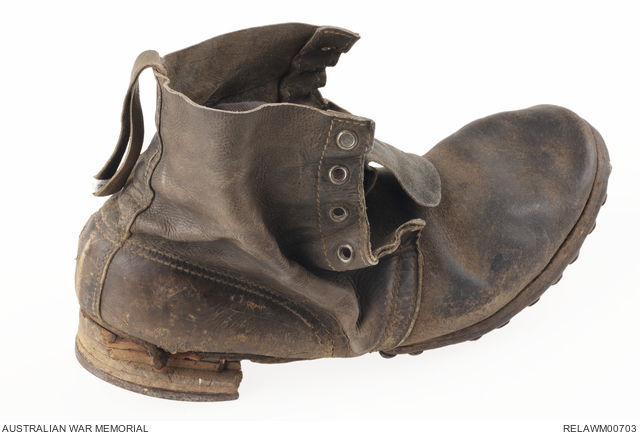
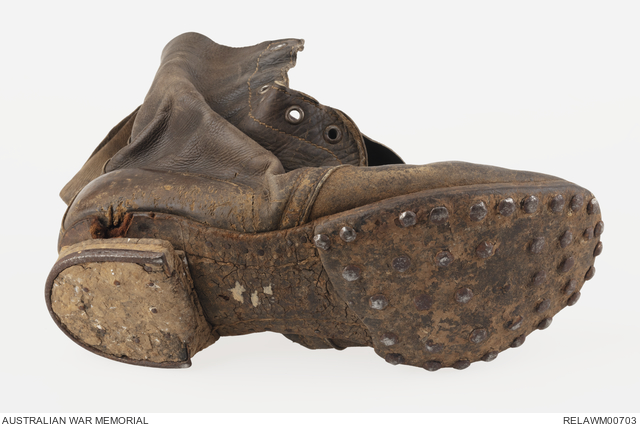
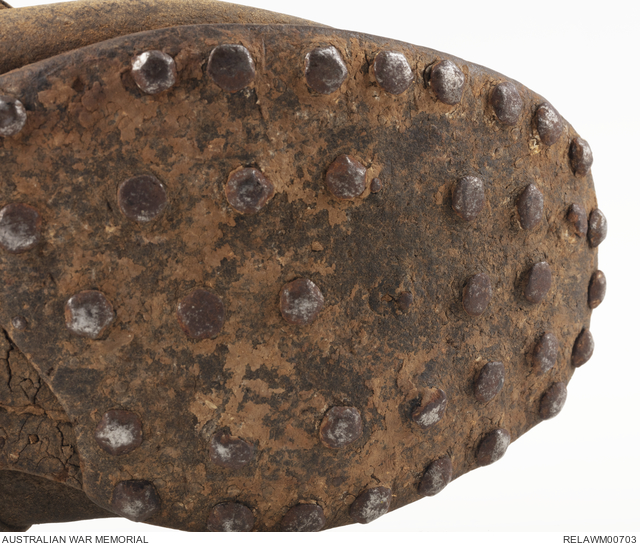
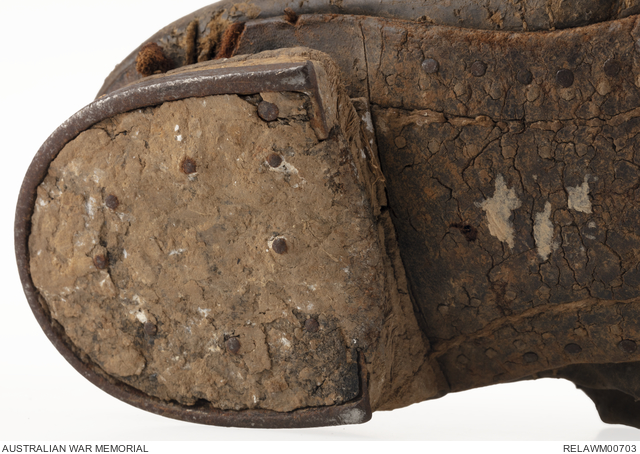
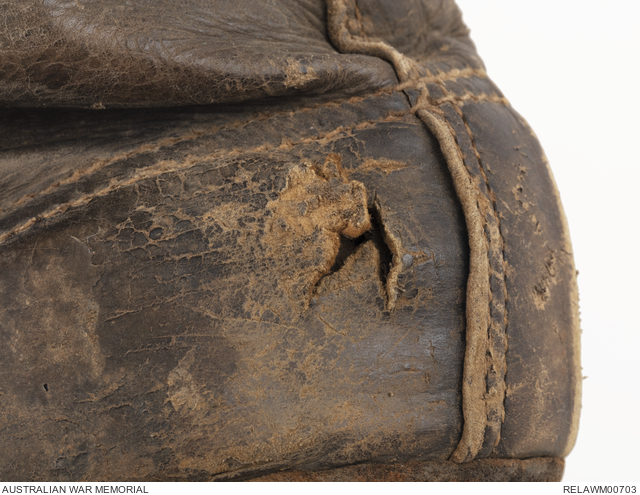

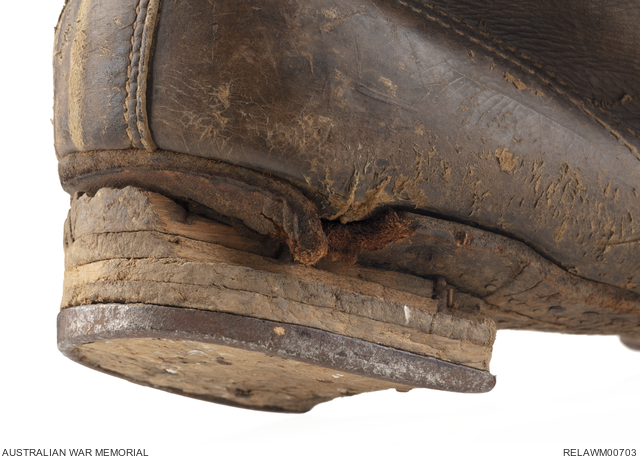
Right foot German ankle boots of sewn construction, with hobnailed sole and wooden heel built up from five layers and nailed to the boot. A heel plate is secured around the rim of the heel and there is accumulated dried mud held against this. There are six nickel plated steel lace eyelets fitted to each side, and the inner lining is made from a shaped mat of woven reed. A long pull-strap is sewn to the rear. There is a bullet or shrapnel hole, entering at the upper left side of the heel and exiting through the lower right. This has removed a portion of the heel and damaged part of the reed lining. The leather of the uppers is soft and about 2mm in thickness.
German ankle boot or schnürschuhe (laced boot), Model 1914, with wooden heel, indicating later (post late 1916) manufacture; the presence of a woven reed inner lining probably indicates an even later date, probably late 1917 or early 1918. The wearer of the boot has received a bullet wound through his heel, with corresponding damage to the boot and its heel, as well as the lining. The use of substitute materials in the everyday equipment of the average German soldier becomes increasingly common in 1917 and 1918, as supplies of ordinary materials disappeared. Later examples of the schnürschuhe feature uppers made from woven paper.
This boot was removed by Captain Charles James of 5 Field Ambulance from the foot of a wounded German of the 90 Reserve Infantry Regiment (54 Division), one of the units facing the Australian when 7 Brigade (25, 27 and 28 Battalions) successfully assaulted the German lines at Morlancourt on the night of 10/11 June 1918, (the attack was launched just after sunset, at about 9:45 pm) supported by a creeping barrage and a series of continuous machine gun barrages (these, creeping into the reserve German lines, inadvertantly broke up a major counterattack).
The attack by 28 Battalion on the left flank mainly encountered the thinly scattered shallow trenches and isolated posts of 90 RIR and despite German suspicions of, and preparations for, an impending attack, the Australia assault overwhelmed them and the other regiments. Its success in gaining ground overlooking German positions to the east and over the Somme allowed contemplation of the Hamel assault on 3 July.
For the attack, 5 Field Ambulance was located at Querrieu and started receiving their first casualties around midnight; the war diary states 'about 60 cases and 2 POWs had arrived at 4:30 am' - in all 12 POWs were treated, including the owner of this boot. The man who removed and retained the boot, 2771 Captain Charles James, was much older than his fellows - born at Bendigo, Victoria, but living near Newcastle, NSW, he had enlisted at Liverpool on 8 March 1915 at the age of 44, was married and sold insurance. However, he brought 13 years previous experience in the Army Medical Corps with him and although initially posted as a private on enlistment, he was rapidly promoted - to Sergeant Major on 19 March in Sydney, and Warrant Officer on 16 June. He sailed to Egypt aboard the 'Ajana' and landed at Gallipoli on 16 August.
By the time 5 Field Ambulance reached France in March 1917, James was an Honorary Captain and Quartermaster. His continued work earned him a Mentioned in Despatches (gazetted 8 November 1918 [31089/314]). He suffered from a particularly bad bout of pneumonia in February 1919 - his medical report noted 'has been debilitated for some time; has lost weight'. He recovered, however, and returned to Australia, his appointment terminated on 21 August 1919. It appears he handed this boot over to the Australian War Records Section whilst still in France.